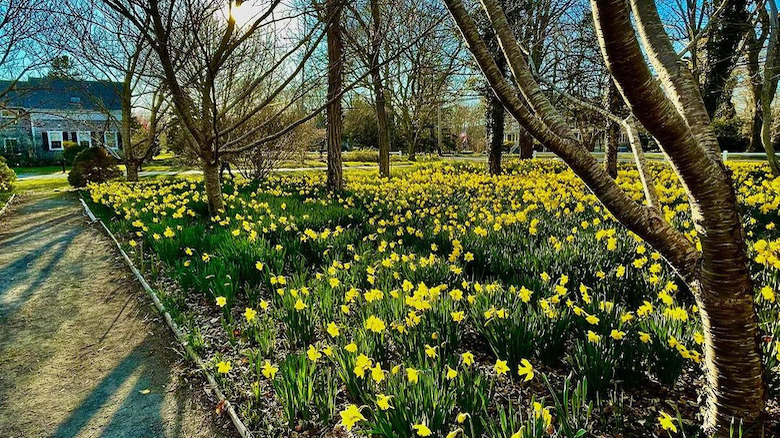Travel Guides Beach Vacations
Lisa Curran Matte
There’s no bad time of year to visit Cape Cod, or the Cape as locals call it. The one-time summer vacation destination where picture-perfect beach towns rolled up the sidewalks on Labor Day and hibernated through Memorial Day has long since become a year-round destination. Still, the season sets the tone, pace, and price of the experience. If you’re hellbent on a beach vacation, July and August are the most obvious months to visit — but expect clogged roads, crowded restaurants, and pricey accommodations.
According to statistics compiled by Champion Traveler, tourism numbers for July routinely outpace August by a small margin. Weather Spark pegs the average daily temperature in July at 64 to 77 degrees Fahrenheit compared to 63 to 76 degrees Fahrenheit in August. Both July and August average about eight rainy days per month. Beach weather? Definitely. But at the height of summer, crossing the bridge over the Cape Cod Canal — the unofficial dividing line between the Cape and the mainland — doesn’t necessarily herald the start of the tranquil getaway Patti Page sang about in her sentimental 1957 ode, “Old Cape Cod” (via Wicked Local).
Wide open beaches

Bruce Goerlitz Photo/Shutterstock
Based on a study of weather patterns going back to 2014, Weather Spark defines Cape Cod’s warm season as a 3.2-month period beginning on June 10 and ending on September 17. Food for thought, especially for anyone whose vacation window isn’t dependent on a school calendar. Average daily temperature in June is 58 to 71 degrees Fahrenheit. In September, it’s 57 to 70 degrees Fahrenheit.
There’s a catch, though. Water temperature. In June, the water temperature at Cape Cod beaches is still pretty chilly. According to Sea Temperatures, water is usually at its warmest in August and stays relatively warm until mid- to late-September. In fact, weatherwise, September may well be the best time of year for a Cape Cod beach vacation. And the very thing that draws visitors, its proximity to the ocean, is exactly why summer-like weather extends just a little bit longer on the Cape than in the rest of the state of Massachusetts. “The Cape is almost a microclimate in itself,” Kristie Smith, a meteorologist with the National Weather Service, told the Cape Cod Times. “It’s really influenced by the water.”
Autumn on Cape Cod

Dale Fornoff/Getty Images
Sometimes called the “second summer” (via Global Viewpoint), September can also be the season for bargains when it comes to accommodations. Although visitors may be catching on to that money-saving secret, prices tend to drop significantly after Labor Day, especially for mid-week stays. And with its ever-growing year-round population, almost 230,000 in 2020 according to the Cape Cod Commission, even tourism-dependent businesses in the most seasonal towns on the lower- and outer-Cape (Wellfleet, Truro, Provincetown) usually stay open through October.
Another perk of visiting the Cape in the later summer and early autumn? Beach parking is free and even seasonally regulated lots reserved for residents only during the high season are wide open. Which also means there are no lifeguards on duty, so watch for rip tides (via Cape Cod Times). Even if the weather is slightly cooler than beach-day perfect, there’s hiking, cycling, golfing, or exploring shops and galleries.
Any time is a good time

It may seem unlikely, but an off-season — or mid-winter — visit to Cape Cod can be even more idyllic, and romantic, than a summertime getaway. Think fireside chats, lingering candlelit meals, and afternoons spent lounging in a spa. According to The Boston Globe, even the Cape’s beaches have a special windswept allure in winter. Then there’s the dining. Clam shacks and beachfront bars may be closed for the season, but winter brings its own Cape Cod magic at places like Ocean Edge Resort where igloo dining in The Frost Bar replaces the summertime Shark Bah.
And just when you’re starting to dream about the return of lazy days spent lounging at the beach, frost gives way to sprouting daffodils blanketing the landscape in a blaze of yellow. From one end of the Cape to the other and on the offshore islands of Nantucket and Martha’s Vineyard, daffodil season on Cape Cod is a rite of spring, heralding the start of a new cycle with festivities including Brewster in Bloom and Nantucket Daffodil Days (via Boston Magazine). As we said, there’s no bad time of year to visit Cape Cod.

